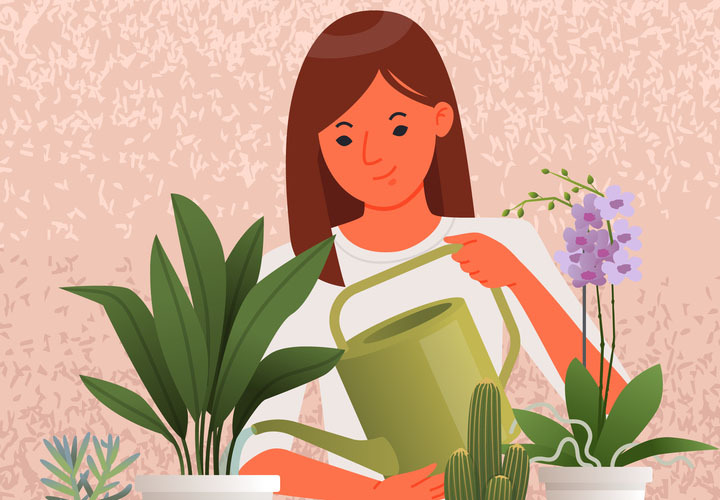Incorporating the natural beauty of the outdoors in your living space is one of the many benefits of having house plants. Even so, when it comes to taking care of plants, many people tend to get overwhelmed.
It is understandable to a certain extend. After all, plants are living and need attention, but there is no need to overthink. Just knowing the basics will be enough to get you started.
Lighting
Not all plants require the same amount of sunlight. Some plants can even strive in the darkest corner, for example, plants such as and dragon trees and spider plants require little sunlight. Knowing the amount needed can also help determine the best placement throughout your house. Be sure to check the label to see the amount of light needed for each plant.
Feeding
Flowering plants require fertilizers high in Potassium, while foliage plants require high nitrogen. Additionally, you can combine compost with slow-release fertilizer and mix it into the soil.
Certain types of plants require a special fertilizer blend so be sure to check the label. A soil test is a good way to identify nutrients deficiencies before applying any nutrients.
Watering
Plants need water, but too much of it can kill the majority of house plants. Never rely on a visual inspection alone, this method is often inaccurate. A simple way to check the amount of moisture present in the soil is by sticking your finger in. Do not water the soil if it seems too damp.
Alternatively, you purchase a Soil Moisture Meter if you prefer having a more accurate reading.
Re-potting
While some plants are fine with being in a pot permanently, others may have to be re-potted. A plant can become root bound if the roots have nowhere to spread out, resulting in all the roots compacted in the shape of the container. This may cause stress on the plant eventually so checking the root system can avoid this.
A simple way to check if a plant needs to be repotted is by turning the pot over and carefully removing the plant. A simple tap on the bottom of the container should do the trick, but be careful not to damage the plant. Roots that are protruding through openings in the container are another good indication that you may need to be switched to a bigger container.
Temperature
House plants can survive in warm or cool environments. Small variations in temperature generally will not be enough to affect plants. Always adjust the temperature or relocate plants if you live in a climate with drastic fluctuations throughout the year. The temperature might be too much shock for the plant. Likewise, never place plants in close proximity to air conditioners and heaters.
Humidity
Humidity is the amount of water particles present in the air. Some plants require a humid atmosphere. If you want, you can try different methods to maintain a moister. Depending on the temperature, you can spray plants with a fine mist of water. Plant containers can be placed in a second container and the gapped filled with stones or compost. Lastly, using some sort of barrier on the top of the soil, for example, pebble should be enough to retain moisture.
Tips: House plants can dramatically change the whole vibes of any living space without spending a fortune. The colors, smell and texture transports many of nature’s natural qualities right into your living space. In the end, all they require is just a little bit of upkeep and patience for what they give us back in return.

